Fluorescent Paper Based on CQDs/Rhodamine B: A Ratio and Sensitive Detection Platform for On-Site Fe3+ Sensing
Abstract
:1. Introduction
2. Results and Discussion
2.1. Characterization of N-SCQDs Prepared via Hydrothermal Method
2.2. Construction of Ratio Fluorescence Probe for Fe3+ Detection
2.3. Detection of Fe3+ Using Ratio Fluorescence Probe
2.4. Paper-Based Platform for Detection of Fe3+ in Water
2.5. Possible Mechanism of Iron Ion Detection
3. Experimental Section
3.1. Reagents and Chemicals
3.2. Preparation of Nitrogen-Sulfur-Doped CQDs
3.3. Preparation of N-SCQDs–Rhodamine B
3.4. Material Characterization
3.5. Effect of pH on Fluorescence of N-SCQDs
3.6. Effect of Ions on Fluorescence of N-SCQDs and Rhodamine B
3.7. Determination of Fe3+ Using N-SCQDs–Rhodamine B
4. Conclusions
Author Contributions
Funding
Institutional Review Board Statement
Informed Consent Statement
Data Availability Statement
Conflicts of Interest
References
- Bhardwaj, K.; Anand, T.; Jangir, R.; Sahoo, S.K. Aggregation-induced emission active benzidine-pyridoxal derived scaffold for detecting Fe3+ and pH. J. Fluoresc. 2023, 6, 1–10. [Google Scholar] [CrossRef] [PubMed]
- Zhang, S.Q.; Zhou, C.; Gao, C.Z.; Yang, J.; Liao, X.L.; Yang, B. Fluorescent probe based on acyclic cucurbituril to detect Fe3+ ions in living cells. J. Mol. Liq. 2023, 390, 122942. [Google Scholar] [CrossRef]
- Wang, L.; Li, W.; Wu, B.; Li, Z.; Wang, S.; Liu, Y.; Pan, D.; Wu, M. Facile synthesis of fluorescent graphene quantum dots from coffee grounds for bioimaging and sensing. Chem. Eng. J. 2016, 300, 75–82. [Google Scholar] [CrossRef]
- Berlyand, A.S.; Vasil’eva, O.Y.; Prokopov, A.A. Determination by atomic absorption spectroscopy of toxic impurity elements in the biologically active substance shunlite. Pharm. Chem. J. 2013, 47, 340–342. [Google Scholar] [CrossRef]
- Ebrahimi-Najafabadi, H.; Pasdaran, A.; Bezenjani, R.R.; Bozorgzadeh, E. Determination of toxic heavy metals in rice samples using ultrasound assisted emulsification microextraction combined with inductively coupled plasma optical emission spectroscopy. Food Chem. 2019, 289, 26–32. [Google Scholar] [CrossRef] [PubMed]
- Sun, H.; Wu, L.; Wei, W.; Qu, X. Recent advances in graphene quantum dots for sensing. Mater. Today 2013, 16, 433–442. [Google Scholar] [CrossRef]
- Namdari, P.; Negahdari, B.; Eatemadi, A. Synthesis, properties and biomedical applications of carbon-based quantum dots: An updated review. Biomed. Pharmacother. 2017, 87, 209–222. [Google Scholar] [CrossRef]
- Pu, J.; Liu, C.; Wang, B.; Liu, P.; Jin, Y.; Chen, J. Orange red-emitting carbon dots for enhanced colorimetric detection of Fe3+. Analyst 2021, 146, 1032–1039. [Google Scholar] [CrossRef]
- Zhang, Y.; Xiao, Y.; Zhang, Y.; Wang, Y. Carbon quantum dots as fluorescence turn-off-on probe for detecting Fe3+ and ascorbic acid. J. Nanosci. Nanotechnol. 2020, 20, 3340–3347. [Google Scholar] [CrossRef]
- Wang, Z.X.; Ding, S.N. One-pot green synthesis of high quantum yield oxygen-doped, nitrogen-rich, photoluminescent polymer carbon nanoribbons as an effective fluorescent sensing platform for sensitive and selective detection of silver(I) and mercury(II) ions. Anal. Chem. 2014, 86, 7436–7445. [Google Scholar] [CrossRef]
- Wang, W.; Lu, Y.C.; Huang, H.; Wang, A.J.; Chen, J.R.; Feng, J.J. Solvent-free synthesis of sulfur-and nitrogen-co-doped fluorescent carbon nanoparticles from glutathione for highly selective and sensitive detection of mercury(II) ions. Sens. Actuators B Chem. 2014, 202, 741–747. [Google Scholar] [CrossRef]
- Shao, D.K.; Yotprayoonsak, P.; Saunajoki, V.; Ahlskog, M.; Virtanen, J.; Kangas, V.; Volodin, A.; Van Haesendonck, C.; Burdanova, M.; Mosley, C.D.W.; et al. Conduction properties of thin films from a water soluble carbon nanotube/hemicellulose complex. Nanotechnology 2018, 29, 145203. [Google Scholar] [CrossRef] [PubMed]
- Wang, Y.; Yang, R.; Li, M.; Zhao, Z.J. Hydrothermal preparation of highly porous carbon spheres from hemp (Cannabis sativa L.) stem hemicellulose for use in energy-related applications. Ind. Crops Prod. 2015, 65, 216–226. [Google Scholar] [CrossRef]
- Yan, X.; Li, H.; Li, Y.; Su, X. Visual and fluorescent detection of acetamiprid based on the inner filter effect of gold nanoparticles on ratiometric fluorescence quantum dots. Anal. Chim. Acta 2014, 852, 189–195. [Google Scholar] [CrossRef] [PubMed]
- Wang, L.; Li, M.; Li, W.; Han, Y.; Liu, Y.; Li, Z.; Zhang, B.; Pan, D. Rationally Designed Efficient Dual-Mode Colorimetric/Fluorescence Sensor Based on Carbon Dots for Detection of pH and Cu2+ Ions. ACS Sustain. Chem. Eng. 2018, 6, 12668–12674. [Google Scholar] [CrossRef]
- Xia, H.; Hu, J.; Tang, J.; Xu, K.; Hou, X.; Wu, P. A RGB-type quantum dot-based sensor array for sensitive visual detection of trace formaldehyde in air. Sci. Rep. 2016, 6, 36794. [Google Scholar] [CrossRef] [PubMed]
- Yan, Y.H.; Zhang, K.; Yu, H.; Zhu, H.J.; Sun, M.T.; Hayat, T.; Alsaedi, A.; Wang, S.H. Sensitive detection of sulfide based on the self-assembly of fluorescent silver nanoclusters on the surface of silica nanospheres. Talanta 2017, 174, 387–393. [Google Scholar] [CrossRef] [PubMed]
- Zhang, D.M.; Jiang, J.; Chen, J.Y.; Zhang, Q.; Lu, Y.L.; Yao, Y.; Li, S.; Liu, G.L.; Liu, Q.J. Smartphone-based portable biosensing system using impedance measurement with printed electrodes for 2,4,6-trinitrotoluene (TNT) detection. Biosens. Bioelectron. 2015, 70, 81–88. [Google Scholar] [CrossRef] [PubMed]
- Lin, B.X.; Yu, Y.; Cao, Y.J.; Guo, M.L.; Zhu, D.B.; Dai, J.X.; Zheng, M.S. Point-of-care testing for streptomycin based on aptamer recognizing and digital image colorimetry by smartphone. Biosens. Bioelectron. 2018, 100, 482–489. [Google Scholar] [CrossRef]
- Qiang, R.; Yang, S.; Hou, K.; Wang, J. Synthesis of carbon quantum dots with green luminescence from potato starch. New J. Chem. 2019, 43, 10826–10833. [Google Scholar] [CrossRef]
- Qu, Y.; Xu, X.; Huang, R.; Qi, W.; Su, R.; He, Z. Enhanced photocatalytic degradation of antibiotics in water over functionalized N,S-doped carbon quantum dots embedded ZnO nanoflowers under sunlight irradiation. Chem. Eng. J. 2020, 382, 123016. [Google Scholar] [CrossRef]
- Dehghani, A.; Ardekani, S.M.; Hassan, M.; Gomes, V.G. Collagen derived carbon quantum dots for cell imaging in 3D scaffolds via two-photon spectroscopy. Carbon 2018, 131, 238–245. [Google Scholar] [CrossRef]
- Jiang, K.; Sun, S.; Zhang, L.; Wang, Y.; Cai, C.; Lin, H. Bright-yellow-emissive N-doped carbon dots: Preparation, cellular imaging, and bifunctional sensing. ACS Appl. Mater. Interfaces 2015, 7, 23231–23238. [Google Scholar] [CrossRef] [PubMed]
- Liu, R.; Zhang, Y.; Piao, Y.; Meng, L.Y. Development of nitrogen-doped carbon quantum dots as fluorescent probes for highly selective and sensitive detection of the heavy-ion Fe3+. Carbon Lett. 2021, 31, 821–829. [Google Scholar] [CrossRef]
- Yao, Q.F.; Zhou, D.S.; Yang, J.H.; Huang, W.T. Directly reusing waste fish scales for facile, large-scale and green extraction of fluorescent carbon nanoparticles and their application in sensing of ferric ions. Sustain. Chem. Pharm. 2020, 17, 100305. [Google Scholar] [CrossRef]
- Golsheikh, A.M.; Huang, N.M.; Lim, H.N.; Zakaria, R. One-pot sonochemical synthesis of reduced graphene oxide uniformly decorated with ultrafine silver nanoparticles for non-enzymatic detection of H2O2 and optical detection of mercury ions. RSC Adv. 2014, 4, 36401–36411. [Google Scholar] [CrossRef]
- Yang, Y.; Xing, X.; Zou, T.; Wang, Z.; Zhao, R.; Hong, P.; Peng, S.; Zhang, X.; Wang, Y. A novel and sensitive ratiometric fluorescence assay for carbendazim based on N-doped carbon quantum dots and gold nanocluster nanohybrid. J. Hazard. Mater. 2020, 386, 121958. [Google Scholar] [CrossRef]
- Dutta, S.; Ray, C.; Mallick, S.; Sarkar, S.; Sahoo, R.; Negishi, Y.; Pal, T. A gel-based approach to design hierarchical CuS decorated reduced graphene oxide nanosheets for enhanced peroxidase-like activity leading to colorimetric detection of dopamine. J. Phys. Chem. C 2015, 119, 23790–23800. [Google Scholar] [CrossRef]

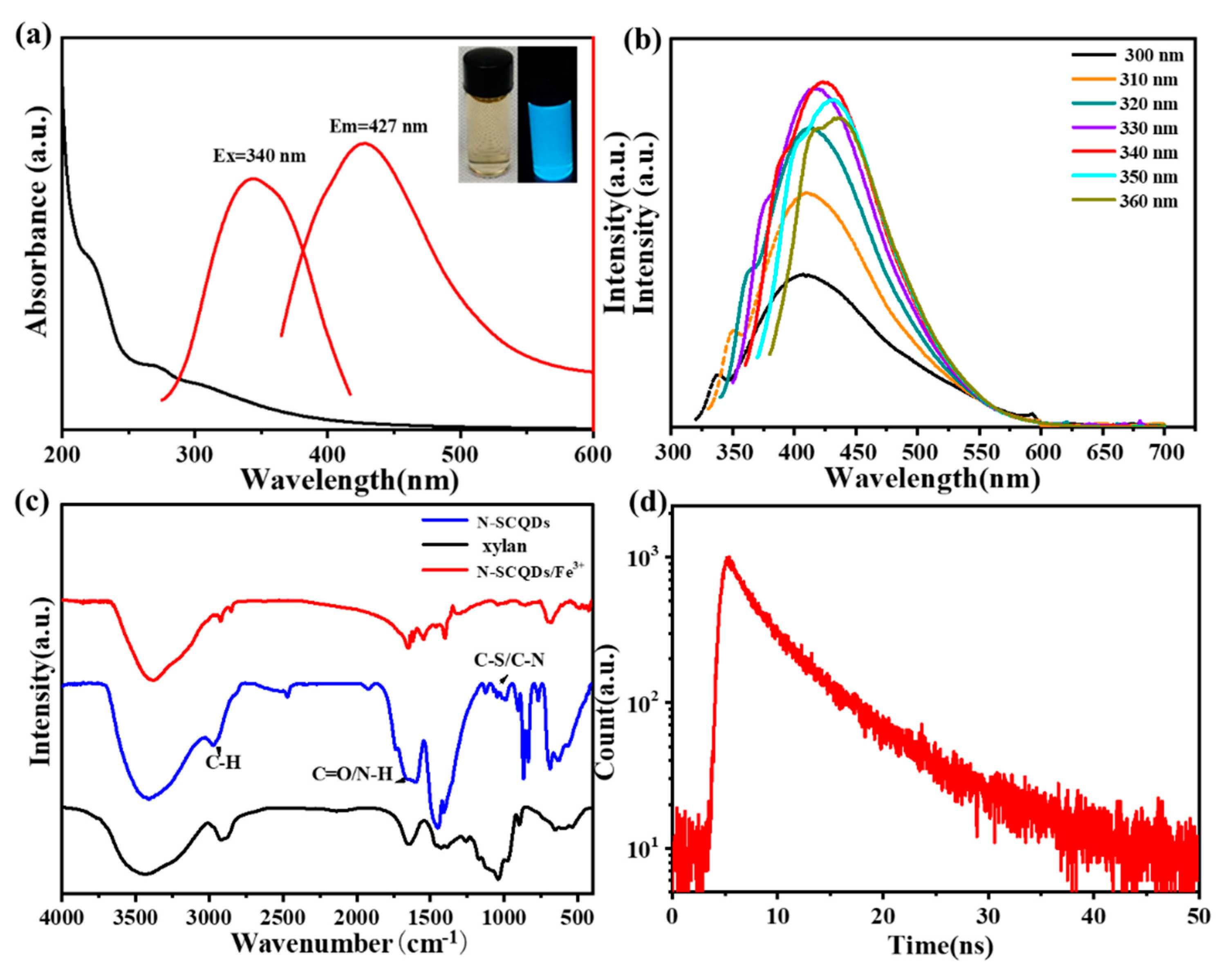
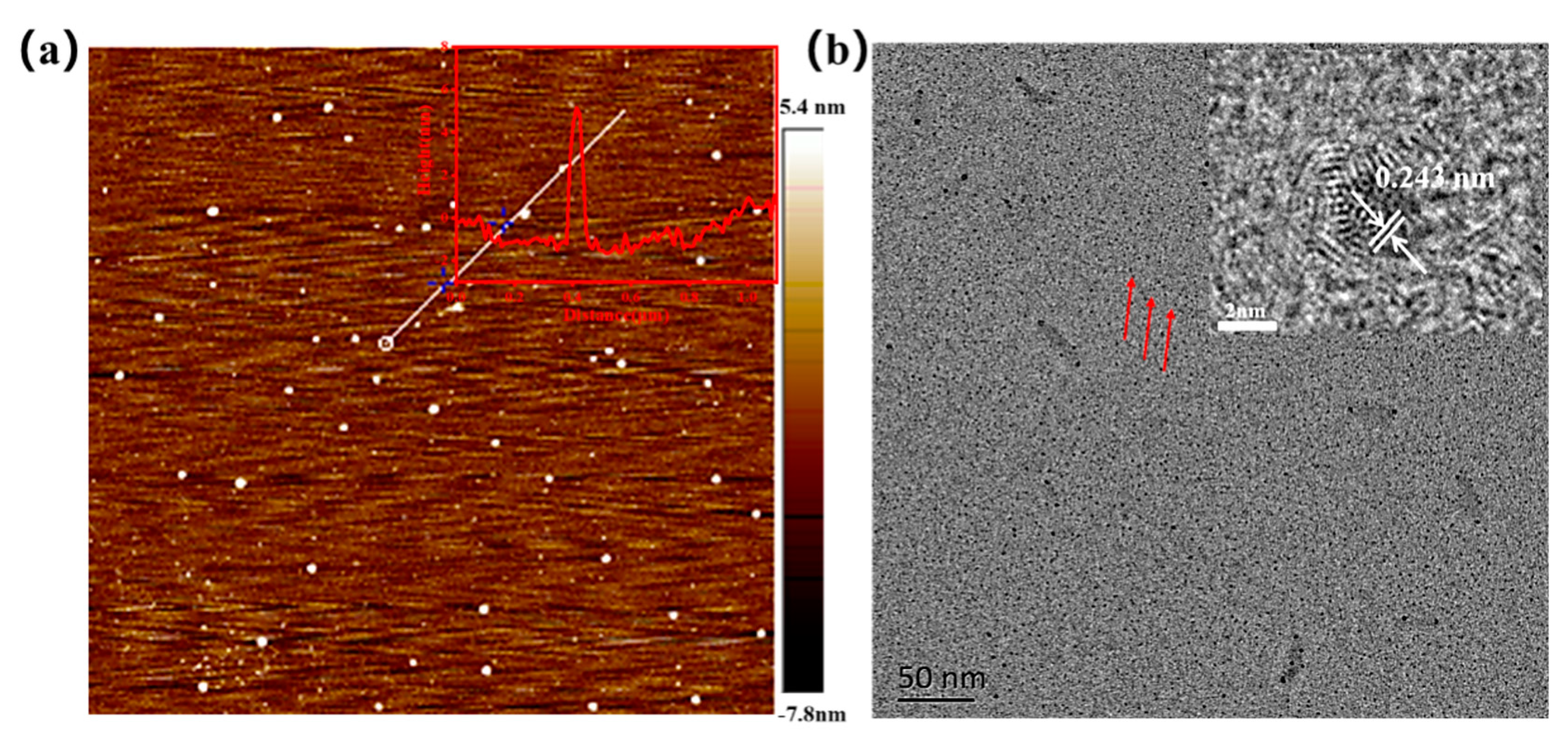
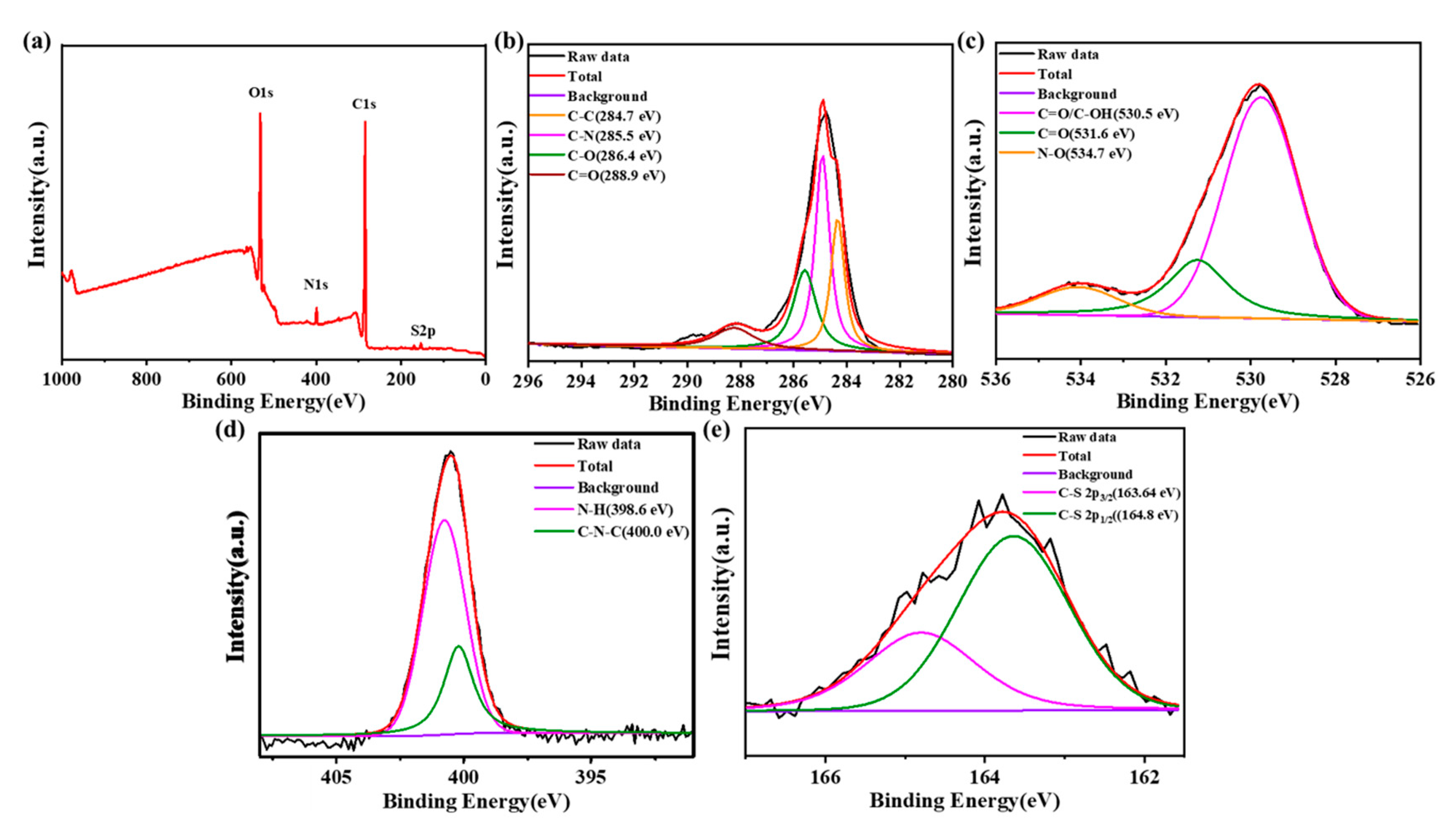

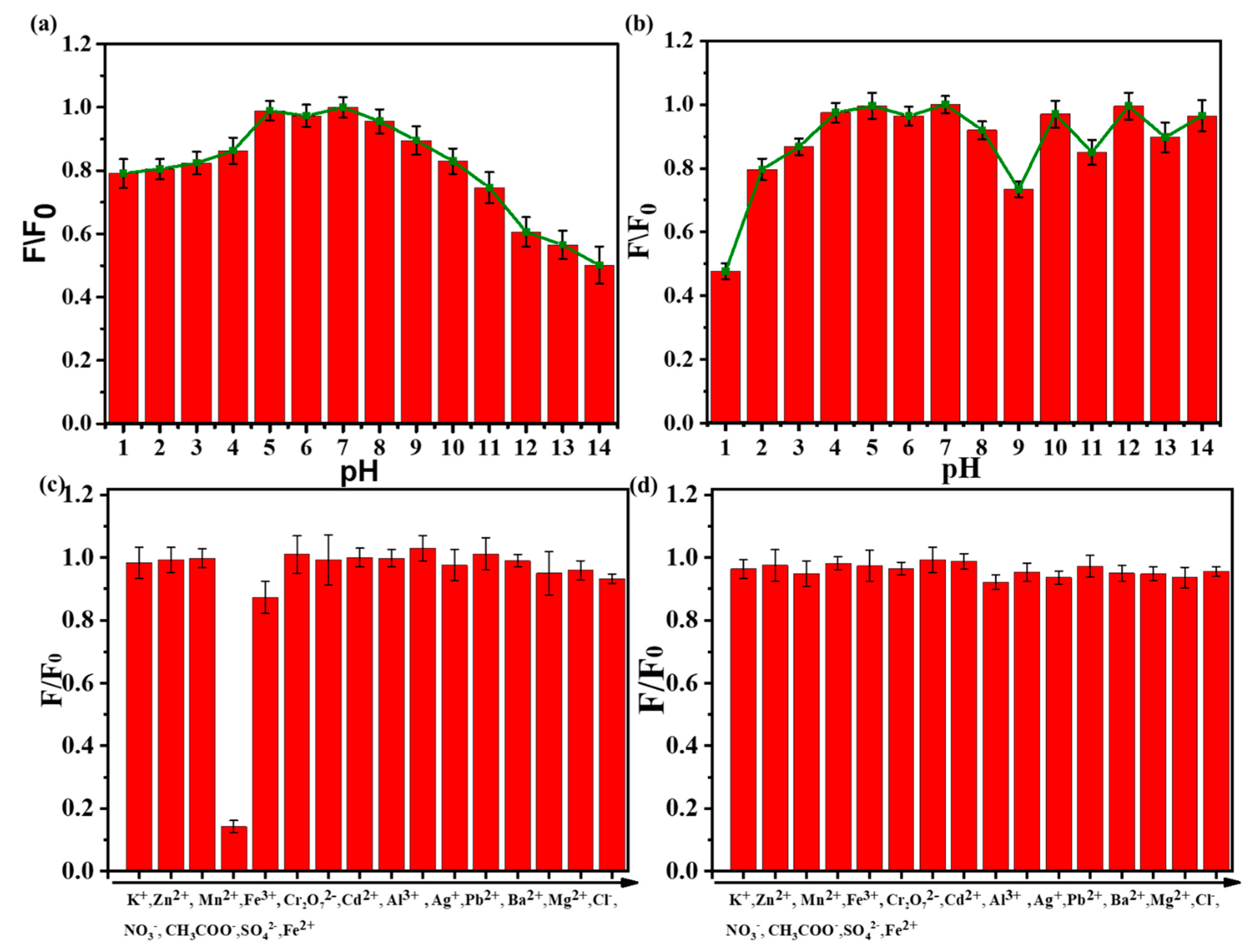

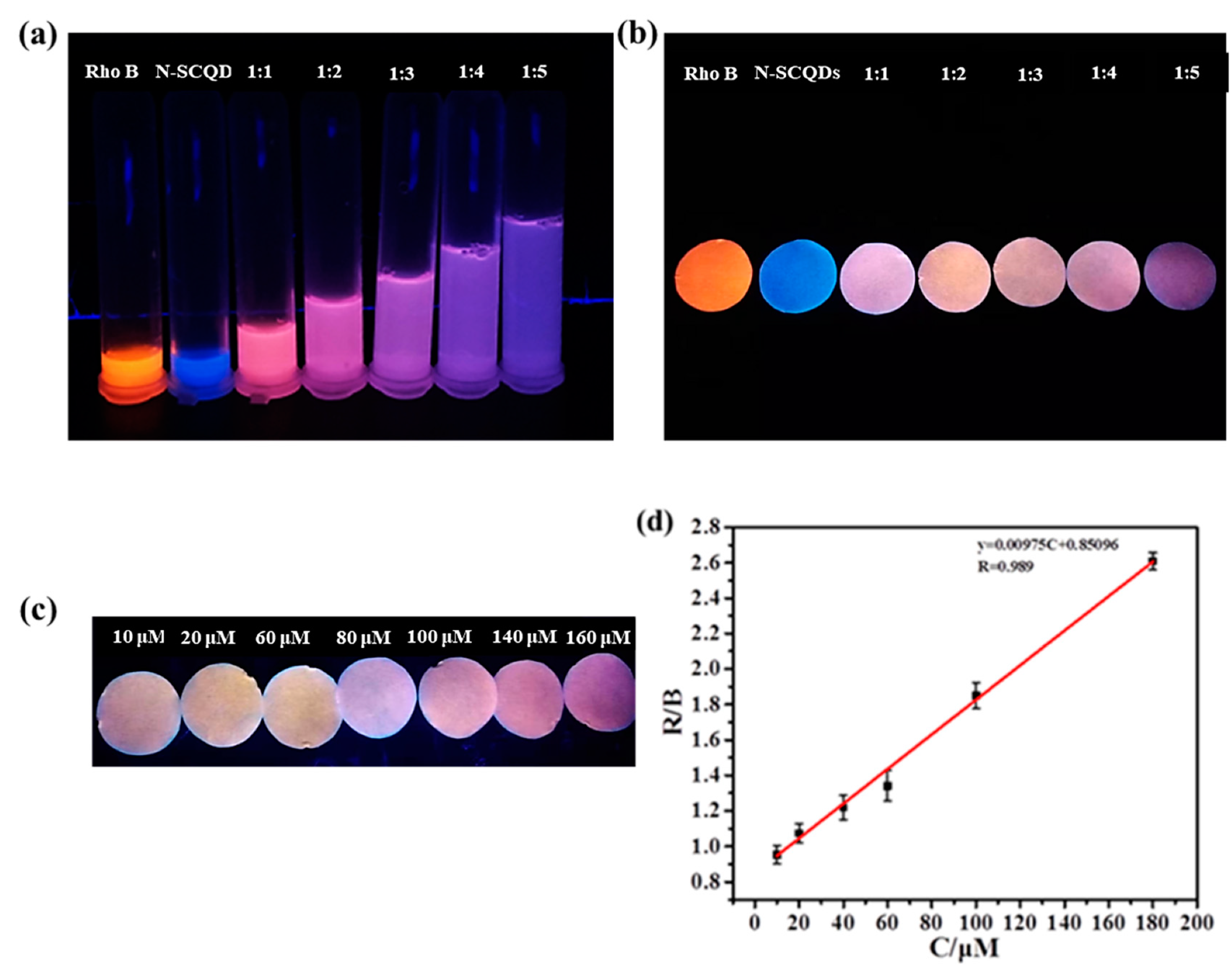
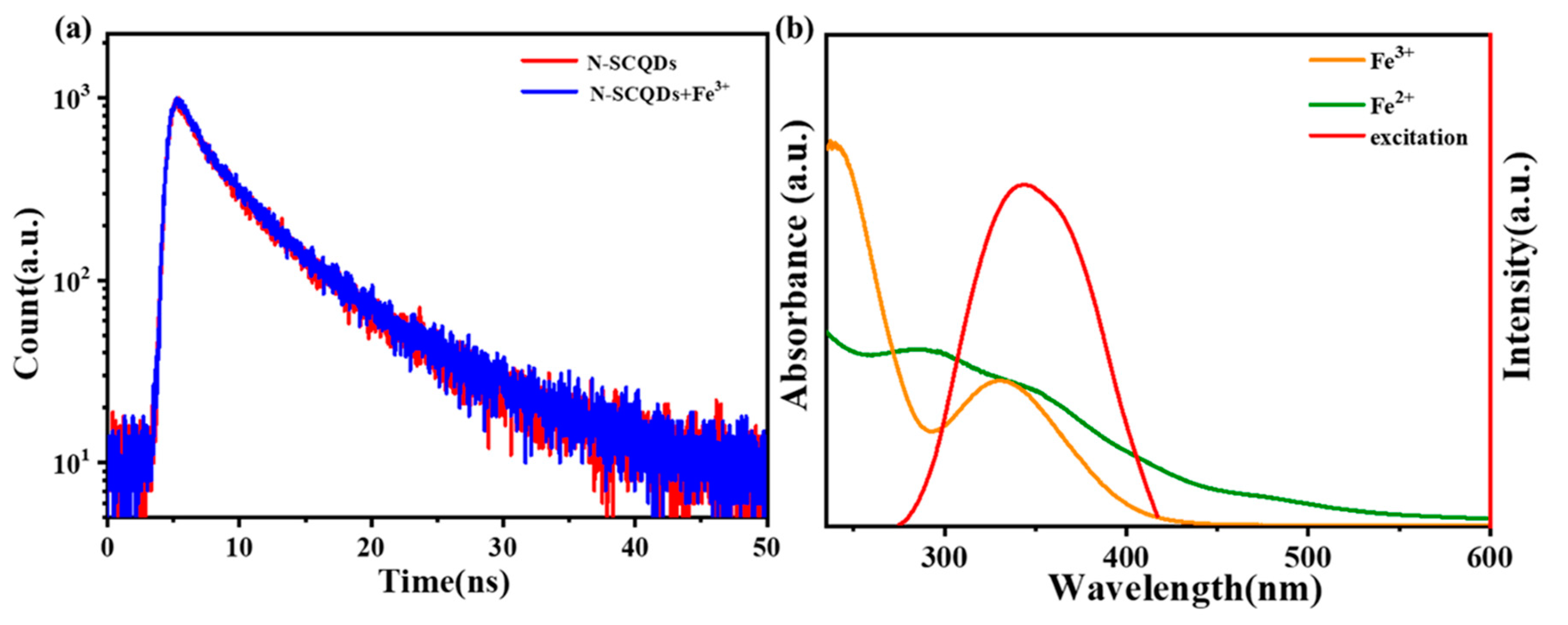
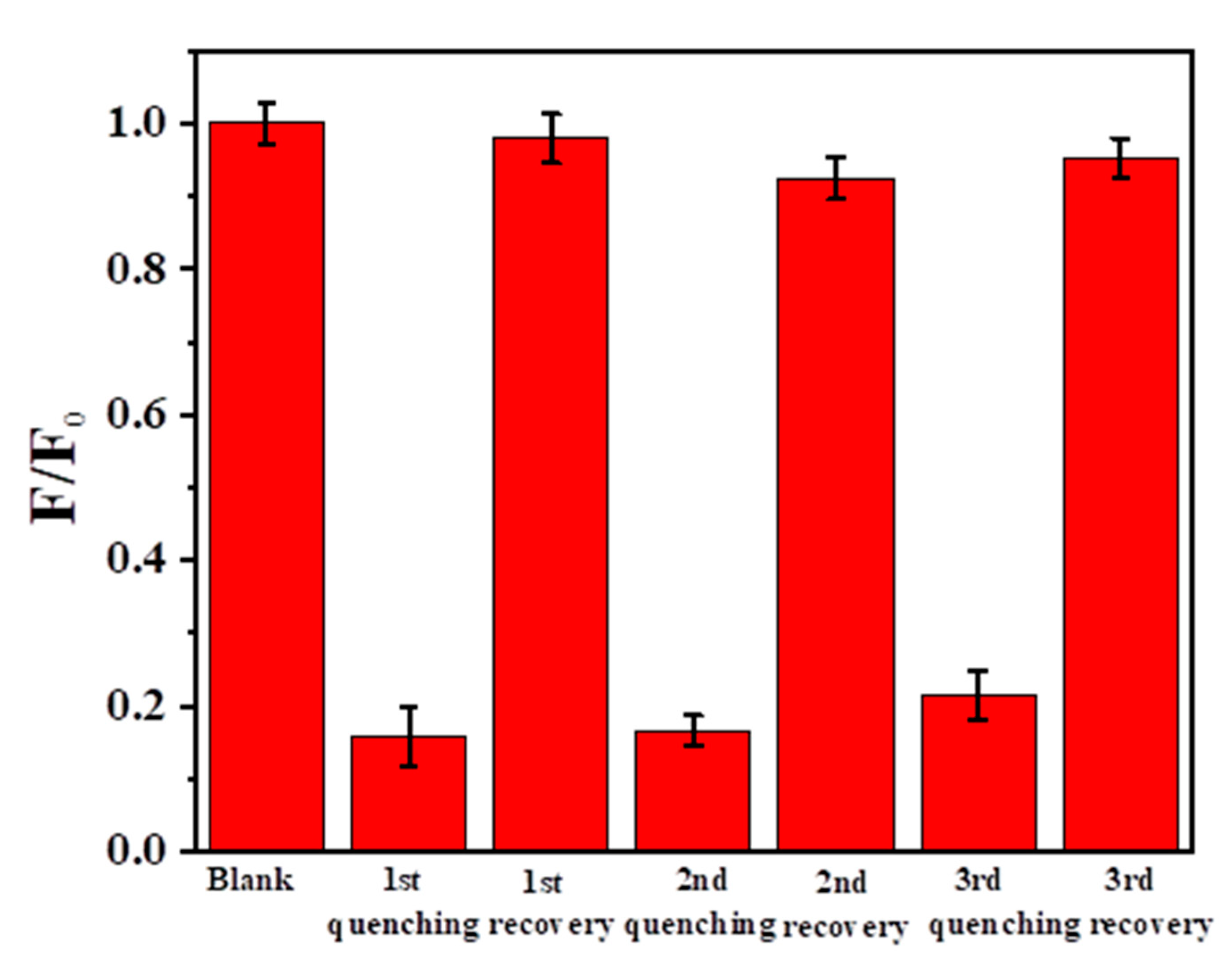
Disclaimer/Publisher’s Note: The statements, opinions and data contained in all publications are solely those of the individual author(s) and contributor(s) and not of MDPI and/or the editor(s). MDPI and/or the editor(s) disclaim responsibility for any injury to people or property resulting from any ideas, methods, instructions or products referred to in the content. |
© 2024 by the authors. Licensee MDPI, Basel, Switzerland. This article is an open access article distributed under the terms and conditions of the Creative Commons Attribution (CC BY) license (https://creativecommons.org/licenses/by/4.0/).
Share and Cite
Han, G.; Cai, J.; Yang, L.; Li, X.; Wang, X. Fluorescent Paper Based on CQDs/Rhodamine B: A Ratio and Sensitive Detection Platform for On-Site Fe3+ Sensing. Molecules 2024, 29, 1658. https://doi.org/10.3390/molecules29071658
Han G, Cai J, Yang L, Li X, Wang X. Fluorescent Paper Based on CQDs/Rhodamine B: A Ratio and Sensitive Detection Platform for On-Site Fe3+ Sensing. Molecules. 2024; 29(7):1658. https://doi.org/10.3390/molecules29071658
Chicago/Turabian StyleHan, Guangda, Jihai Cai, Lu Yang, Xiaoyun Li, and Xiaoying Wang. 2024. "Fluorescent Paper Based on CQDs/Rhodamine B: A Ratio and Sensitive Detection Platform for On-Site Fe3+ Sensing" Molecules 29, no. 7: 1658. https://doi.org/10.3390/molecules29071658
APA StyleHan, G., Cai, J., Yang, L., Li, X., & Wang, X. (2024). Fluorescent Paper Based on CQDs/Rhodamine B: A Ratio and Sensitive Detection Platform for On-Site Fe3+ Sensing. Molecules, 29(7), 1658. https://doi.org/10.3390/molecules29071658








